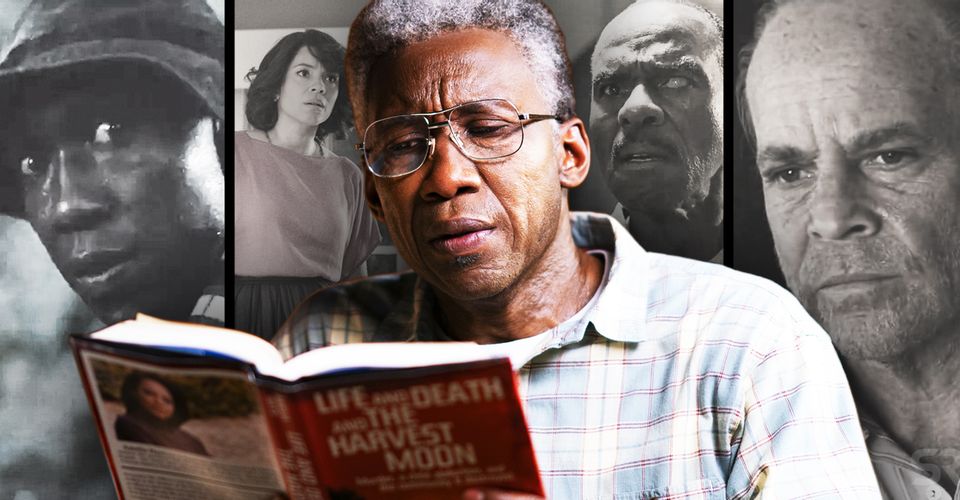True Detective Season 3 Ending Explained: Why The Finale Was Perfect

WARNING: Spoilers for the True Detective season 3 finale.
True Detective season 3’s ending brings a great TV story to a close in perfect, emotional fashion. The life of Wayne Hays (Mahershala Ali) has slowly unfurled non-chronologically over past eight weeks on HBO, using his major unsolved case as a way to explore the power of memory and time in a wholly unexpected way.
In many ways, True Detective season 3 was a return to the style of season 1. That was somewhat clear from the start – the story is told across decades, focuses on the detective partner relationship contrasted with home life, has a southern American setting and hints of a conspiracy – but the finale proved things run deeper than that. As a vague and ultimately indirect crossover suggested, the end of True Detective season 3 mirrored season 1 in not being the victorious case closing that many online theorists seemed convinced it would be.
Related: True Detective Season 3 Is So Much Better Than Season 2 – Here’s Why
Indeed, while audiences did get answers to all the big mysteries of True Detective season 3’s primary case in the bumper-length finale, the focus was most certainly on Wayne’s life outside of (or, perhaps given his obsession, tangential to) the investigation. And that leaves many questions. Allow us to explain what the True Detective season 3 finale really means, and what makes the ending so effective.
- This Page: True Detective Season 3’s (Very Simple) Mystery Explained
- Page 2: True Detective Season 3’s REAL Story
- Page 3: What True Detective Season 3’s Ending Means
True Detective Season 3’s Case Was Easy To Solve (Because The Show’s Not About The Case)

The clue is in the name. True Detective is ostensibly a mystery show. And so the thrust of season 3’s story was that of the missing Purcell children, two pre-teens who disappeared on the day Steve McQueen died in 1980. The boy, Will, was found murdered and posed, while girl Julie remained missing until she reemerged unexpectedly a decade later in 1990. However, despite a new investigation, the real killer-kidnapper was never found. Throughout the eight episodes, a lot of clues were dropped pointing to food magnate Edward Hoyt (Michael Rooker), a pedophile ring conspiracy, and religious corruption.
In the True Detective season 3 finale, it was revealed that the kidnappers were Isabel Hoyt, daughter of the CEO, and employee Junius Watts. The former had lost her daughter, Mary, at a young age and gravitated towards Julie after seeing her at a Hoyt employee event. She started meeting the Purcell children in secret under the approval of their mother, Lucy (Mamie Gummer), but, after going off her Lithium medication, things went wrong: Will was killed and Isabel took Julie, who was raised as “Mary” in the “pink room” hidden deep under an off-limits part of the Hoyt estate. Watts helped Julie escape around 1990 and she later faked her death at a commune, ending up living happily with childhood crush Mike Ardoin.
Read More: True Detective Season 3 Killer Revealed & Motive Explained
In many ways, the twists are rather obvious if you’ve been paying close attention. It was clear Lucy had sent the note trying to curb the investigation and that Hoyt Head of Security Harris James had planted evidence in 1980. Hoyt Foods then slowly emerged as a malevolent force with ties to the death of far too many key players, while the big mystery at the company’s core was the mental degradation of Isabel. The pink room sealed the deal in the final moments of episode 6, the same hour where an adult Mike was first teased. And yet, a lot of other clues wound up incidental; the straw dolls, an entry point into a conspiracy theory that tied the Purcells to season 1, ended up being simply toys. It could be argued that True Detective season 3’s mystery is both easy and dishonest.
However, this shouldn’t be too surprising to fans of True Detective: this is pretty much exactly what happened in season 1. There, a major, repeated cult of the Yellow King, one whose imagery was tied into the home life of Marty Hart (Woody Harrelson), wound up being a distraction to a more focused evil killer; in its place was a finale that focused on cynical Rust Cohle (Matthew McConaughey) finding spiritual peace. Season 3 did draw connections to this story by teasing a bigger picture of cross-state pedophile rings, but that was again little more than a tease with no further exploration or relevance. In fact, it really just served as a reminder of what the focus of the show should be; in both seasons of True Detective (let’s ignore season 2), the mystery and its potential threads didn’t matter as much as the characters’ stories.
The clue is in the name. True Detective is ostensibly a mystery show but it’s really about the person who’s tasked with the solving. The documentarian in the 2015 section working on a show called True Criminal is the one interested with total resolution of the case; the drama we’re watching is much more about Wayne Hays.
Page 2 of 3: True Detective Season 3’s REAL Story
1
2
3
About The Author


















